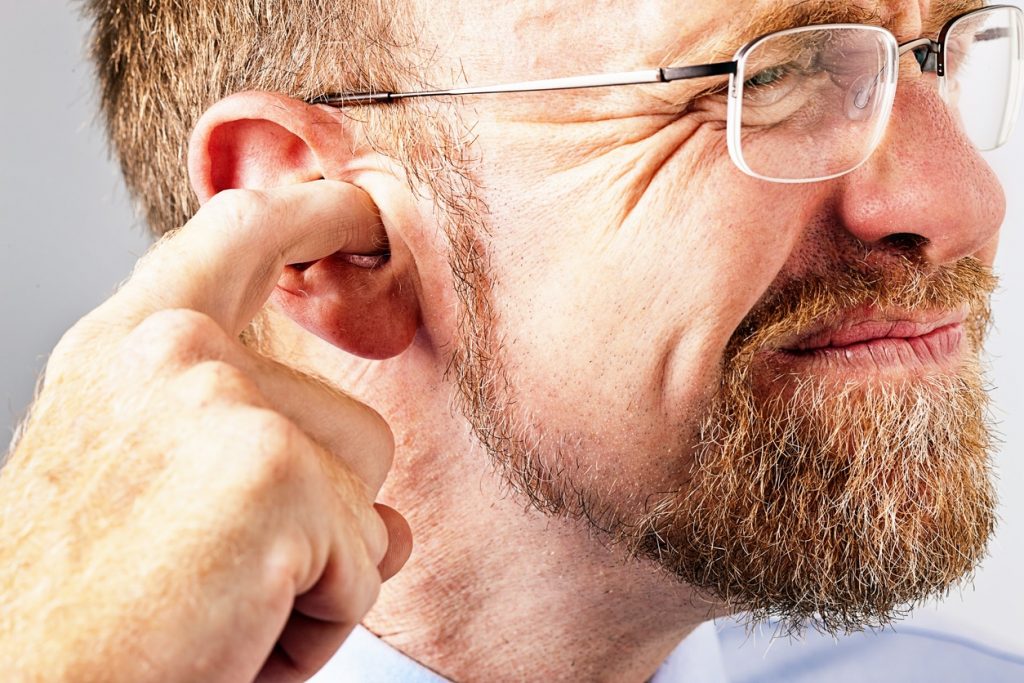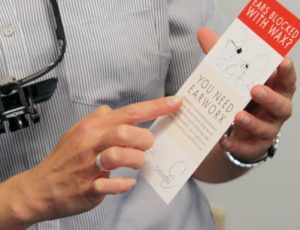Having blocked ears is incredibly uncomfortable. Some common complaints relating to blocked ears include: difficulty hearing at home or at work; hearing your own voice in your head; feeling off balance and suffering a worsening of ringing in the ears. These are just some of the symptoms that can be experienced.
So what can you do if your ears feel blocked?
Why Do My Ears Feel Blocked?
A common cause of blocked ears is wax build up, so a good first step is to eliminate this as an issue. Consulting your local medical professional or Earworx registered nurse can help you to determine whether wax impaction is present and whether wax removal is required.
Nasal congestion (or anything that causes this) can also cause a blocked ear e.g. a recent cold or upper respiratory tract infection. In this case may not be able to ‘pop’ your ears, you may hear a crackling noise or feel a ‘fluid’ sensation in the ears, and changes in altitude (e.g. flying) may be uncomfortable. Consulting your local medical professional is recommended in such cases. You may also seek the advice of a pharmacist in the interim for symptom relief.
Symptoms of Blocked Ears
Accumulation of earwax caused by failure of the self-cleaning mechanism or pushing earwax down the ear canal through improper wax removal methods is one of the most common reasons patients seek medical care for ear-related problems and a feeling of blocked ears. Once earwax reaches a point where the eardrum can no longer be viewed, or you are experiencing symptoms related to wax build up, removal of excess ear wax is clinically indicated.
In addition to a feeling of blockage related to wax build up, you may also experience:
- Hearing loss
- Tinnitus (a ringing in the ears)
- Feeling of fullness
- Itching
- Pain
- Discharge
- Odour
- Cough
Our clients often describe waking up with a blocked ear, hearing noises in the ear over the course of the morning leading to the ear eventually unblocking, but again the ear re-blocks overnight. This is because movement of the soft, outer part of the ear through chewing and talking causes the wax to move which creates temporary gaps in the wax and allows sound to travel down the ear canal to the drum ‘through the gaps’.
What Causes Blocked Ears?
Excessive or impacted wax is present in one in 10 children, one in 20 adults, and more than one third of the geriatric and developmentally delayed populations. Some people are more prone to wax impaction than others. More prone are those who:
- Have narrow, hairy or curvy ear canals
- Wear hearing aids
- Use cotton buds or other objects in the ear (e.g. ear candles)
- Have a hereditary disposition to wax build up
- Wear ear plugs or earphones regularly
- Work in dusty or dirty environments
- Suffer from stress
So, How Do I Treat This Feeling of Blocked Ears?
For an ear blocked with wax, a good first step is to try ear wax softening drops. Ear wax softening drops can be used ONLY if there is no perforation of the ear drum (seek clinician advice prior if you are unsure as a hole in the eardrum or previous ear surgery may make this remedy unsuitable). Ear wax softening drops, normally purchased from your local chemist, are used to both soften and disintegrate the wax built up within your ear canal. They are often used in combination with other wax removal techniques such as micro suction and curettage, to assist in a quicker and more gentle removal of wax. Softening drops may lead to a ‘gap’ being created in the wax, which may provide some temporary relief with respect to the blockage (and help you regain some hearing) prior to manual removal and on occasion may also lead to a complete resolution of impacted wax. This is more likely when the volume of wax is minimal. Always ensure to have your ear checked by a professional afterwards to ensure no wax has remained in the ear canal.
If your symptoms don’t subside following the use of ear-softening drops, you should consult a professional. The wax may be too large, deep or dry for the softening drops to be effective, and wax may need to be removed using the micro-suction and curettage technique.
This procedure is administered by a qualified, registered nurse who uses small instruments and gentle suction to remove it from the ear. Symptom relief is normally immediate. Education is then provided on what can be done to prevent symptoms from recurring.
For any unresolved presenting symptoms following wax removal, it is important to consult a medical professional.
What Next?
If your ears are feeling blocked, you should contact a professional for advice.
You can also contact one of Earworx clinics direct:
Hobart
- Email: [email protected]
- Mobile: 0475 841 033
- BOOK ONLINE NOW
Bondi Junction
- Email: [email protected]
- Mobile: 0448 877 351
- BOOK ONLINE NOW
Launceston
- Email: [email protected]
- Mobile: 0455 518 444
- BOOK ONLINE NOW
Ulverstone
- Email: [email protected]
- Mobile: 0455 518 444
- BOOK ONLINE NOW





